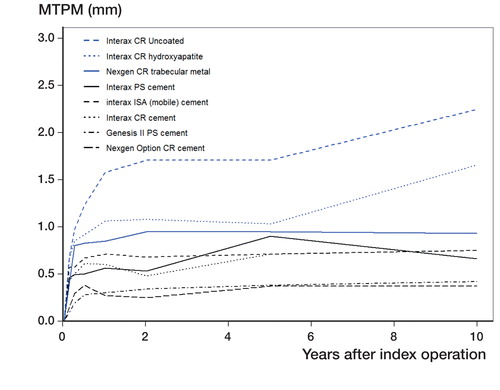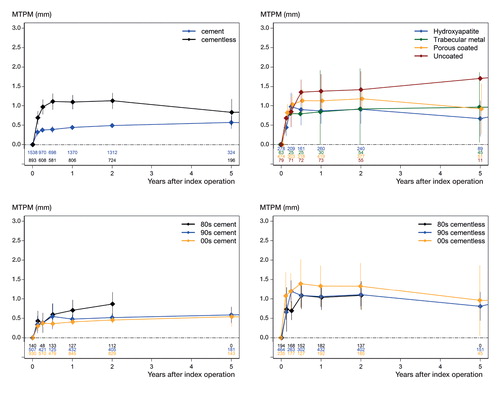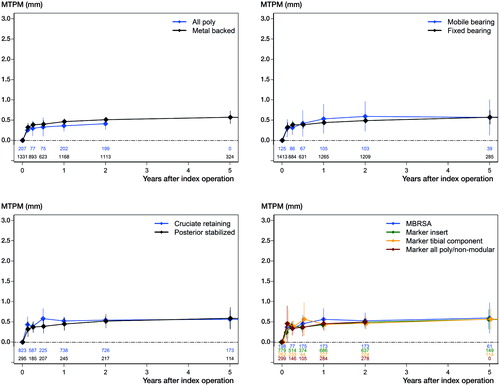Figures & data
Table 1. Number of study groups and knees for each follow-up moment
Table 2. Precision as determined by double examinations from the included studies of the meta-analyses
Figure 1. Early migration in percentiles of 111 study groups, 2,470 knees. The migration of two known disasters is also plotted: Boneloc cement (MG II prosthesis) and Freeman–Samuelson all-poly uncoated and uncemented.

Figure 2. Long-term migration of 8 study groups. Black for cemented TKR. Blue for cementless TKR. CR = cruciate retaining. PS = posterior stabilized.

Figure 3. Migration patterns for cemented and cementless TKR, types of cementless TKR and migration according to decade in which the inclusion of the study started for cemented and cementless TKR separately. The number of RSA examinations is given for each follow-up in color and order corresponding to the legend.

Figure 4. Migration patterns for cemented TKR. Comparisons of all poly versus metal backed, mobile bearing versus fixed bearing, cruciate retaining versus posterior stabilized and RSA techniques is made. The number of RSA examinations is given for each follow-up in color and order corresponding to the legend. MBRSA = model-based RSA. For a detailed description on RSA techniques see the text.

Figure 5. Proposed RSA migration evaluation for 2 years’ follow-up based on the results of the meta-analyses. Early migration is evaluated by MTPM at 6 months, stabilization 1 is evaluated by MTPM between 6 and 12 months, and stabilization 2 is evaluated by MTPM between 12 and 24 months. a modified according to Pijls et al. Citation2012a. b according to Ryd et al. Citation1995.

